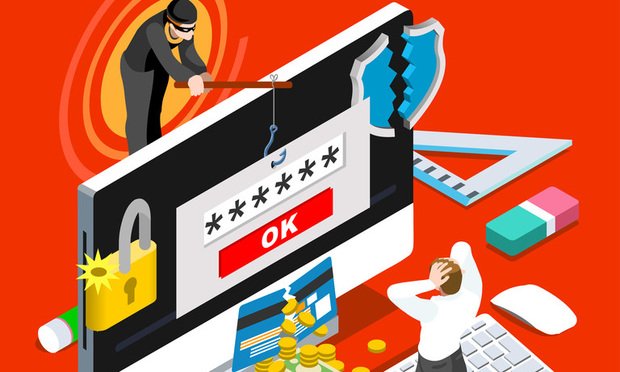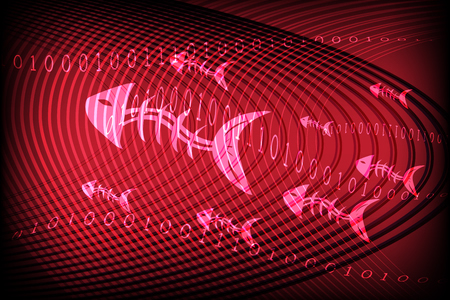
Today the most common and dangerous email threats, phishing attacks are something that every modern organization in this day and age face at least once. Attackers are increasingly exploiting our reliance on email communication in this digital era. This is evident with the incident that nearly half of the said phishing attempts had been successful last year in 2020. However, what is the basis of phishing?
IT security professionals must realize how such attacks function so they can guard expected victims from the end-users that phishing targets. Imagine the situation when you are in your office striving to meet the deadline and your inbox hit a new email from one of your vendors. There is a new mailing address in the invoice. You might consider this to be just another regular email.
Except that it is not just another regular email and after some time your boss announces that the organization has mystically lost around a thousand dollars. When you read the email address you saw that there is a weird typo error in the sender’s email address.
Millions are people falling Victim to Email Scams
Hundreds of recipients become the targets of phishing emails at once. Users are being lured to opening a webpage by hitting a line where they’re required to part with their personal data. However, there is a more specific way of phishing that the attackers have developed termed as spear-phishing. The hacker masquerades as someone you trust like a regular associate. This way you will not question them that often when they seek your confidential information. Implementation of a multi-layered solution is the ideal way to handle the risk of phishing. This points to combine technical protection like a safe email platform with a human intellect like awareness training.
Phishing Awareness Program
To target end-users directly, phishing attacks run through gaps in tradition email gateway services. Organizations are consistently looking for newer ways to safeguard the data of their users as the threat of these is growing constantly. Executing awareness program is one way of pulling this off.
Phishing awareness program help users learn the ways to apply the right ways to get and the tricks to identify suspicious emails. The users are drilled with feign phishing emails once they have completed the training course. If the emails are not reported by them, experts can offer them additional training.
How Phishing Awareness Training Works?
There is a safety-first approach in phishing awareness training that considers data safety and network security. The employees are provided with the information and devices using which they need to fight phishing attacks. Intricately crafted programs make users learn how to respond to and detect these risks to protect the critical data instead of entering easily into the organization’s network.
2019 witnessed a drop in phishing click rates due to the powerful training simulation solutions. There was also a hike in the reporting rates in spite of the number of the phishing attacks that keep on increasing every year.
Must-have Features in a Phishing Awareness Training Program

Today, there are many phishing awareness training platforms out there but picking the most suitable one addressing your needs can be quite difficult. Below are some of the most popular solutions that include:
- A well updated multi-media content repository. The “multi-media” is heavily emphasized. There will be separate learning pattern for all your employees hence there will be a variety of materials that will ensure that the material is enticing for everyone. As the library is constantly updated, information about the latest threats that the businesses are braving will be updated on it.
- Interactivity. You can also increase your user engagement by hosting tests, quizzes, and gaming methods. This in turn catapults information inventory. Employees will in this way put what they have learned into practice much more than otherwise.
- Customization. It is quite imperative that you can develop learning routes or customize modules to target particular risks that are threatening your business. It is also important to simulate phishing emails that are crafted to test workers and can be configured to imitate the kinds of emails your employees ideally receive.
- Simulations. The best way to test the progress of your employees is by simulated phishing emails. Workers must notify these emails either by contacting their IT’s desk or via the reporting button. However, if they are unable to do so they will be redirected automatically to a web page where they are explained what mistake they made.
- A “Report” button. Not only feigned emails can be reported through these inbox plugins but users can also report real threats to the IT department. This way it is quick and easy to highlight the suspicious content. Based on the triaging of the reported emails and with automated evaluation on the phishing attempts reports, the best simulations are held. Based on Agari’s 2020 Phishing Episode Survey, nearly 67% of all the reported threats were false and not actual risks. This means that they were not real threats at all. Security teams save valuable time due to automated analysis by differentiating false threats from the genuine ones and then prioritizing theme.
- Reporting tools. You can find who is susceptible to simulated threats by the admin reporting that the best simulations include. This can help those employees by being directed towards further training on these attacks towards particular training stuff and then in the future can be re-tested.
The above points will help you categorize the perfect training solution concerning your organization’s needs however, it is also a great idea to implement an idea that includes all of these points.
Synopsis
No “alleged golden solution” will provide you with entire safety against phishing risks. A multi-facet solution must be implemented combining human and technical safety. With most suitable phishing training awareness and optimal simulations, businesses can protect their employees from being potential victims of phishing threats.
